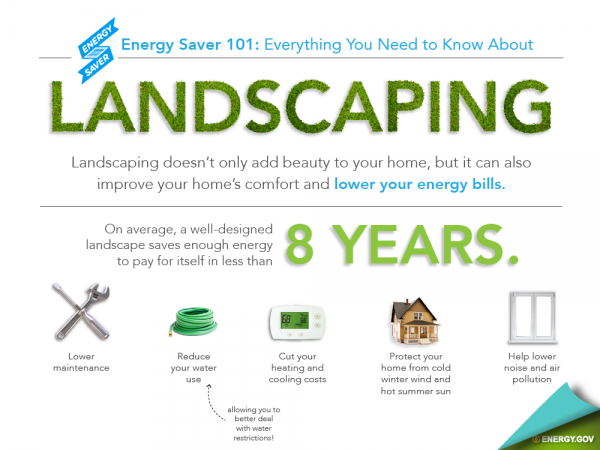The ideal landscaping should not only be beautiful to look at, but also compliment your lifestyle and tastes. Your preference may range from a low maintenance lawn requiring little up keep to a lush green yard that let’s you exercise your green thumb.
The right landscaping can also have a direct impact on your home’s energy efficiency. It’s possible to create a landscape plan specifically to reduce energy costs and conserve energy. This infographic from Energy.gov explains everything you need to know about energy efficient landscaping.

In addition to saving you money, an energy efficient landscape can lower your maintenance costs, conserve water, protect your home and lower noise and air pollution. The best landscaping strategy will depend on where you live. In cool climates, plant trees to allow the winter sun to reach south-facing windows. Harness the sun’s heat and give your thermostat a break.
In hot-arid regions, like most of California, you’ll want to add shade tress to keep you home’s walls, windows and roof cool. Additional shade can cut energy bills by up to 50%! Those in the gulf coast region should avoid plant beds that require frequent watering near the home (no need for even more humidity!). Temperate regions should take advantage of sun’s warmth in the winter and maximize shade in the summer.
Use this map to determine your climate region and get more information on your best landscaping strategy.
If you’re dreading winter for what it does to your heating bills, consider landscaping for windbreaks. Windbreaks can reduce heating expenses by lowering the wind chill near your home. According to Energy.gov, planting evergreen trees like camphor and shrubs to the north side of your home can reduce the wind’s chilling effects.




